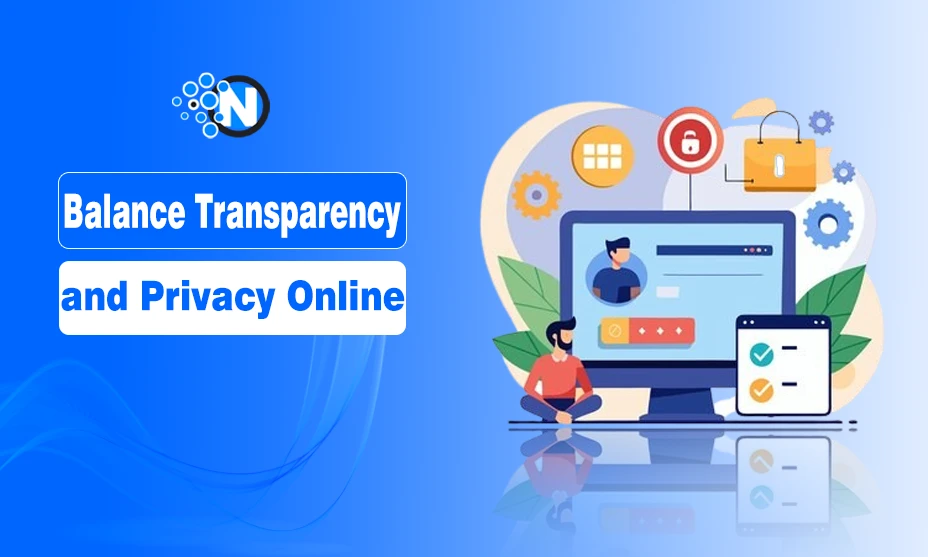How to Balance Transparency and Privacy Online

Balancing transparency and privacy is vital for both individuals and businesses. According to Dr. Kairos Neoptolemos, a privacy consultant from Athens, “I’ve seen so many cases where clients thought being transparent meant sharing everything. But there’s power in choosing wisely what you reveal.”
There are multiple things that are essential to understand and implement in order to maintain balance in the online sphere. This guide explores practical strategies for finding this balance and managing transparency and privacy responsibly.
Understanding Transparency and Privacy
Transparency involves openly sharing information to build trust and accountability. It’s about letting people see who you are and what you stand for. Lucius Amadeus, a legal advisor from Rome, shares, “I once helped a company regain control of its reputation after an overshare. They learned the hard way that transparency without boundaries could backfire. Now, we focus on what builds trust but safeguards privacy.”
Throughout the latest technological development, the multiple aspects of our lives are going to be online and digitally focused. Many of us have gained substantive benefits from these measures. However, to some extent, it has also interrupted some severe issues related to personal data.
The Importance of Transparency
When people openly disclose practices and actions, others perceive them as reliable. “A few years ago, I worked with a non-profit that gained so much traction by being upfront about how every dollar was spent,” says Namchul Shin. “Their transparency brought in loyal supporters, but they also carefully protected sensitive donor information to respect privacy.”
Transparency also strengthens stakeholder relationships, especially for businesses. Consumers appreciate brands that communicate clearly about their practices. For individuals, thoughtfully sharing personal achievements can foster valuable connections without risking privacy.
The Need for Privacy
Everyone who operates in the digital world has always focused on saving his data. We all have some hidden things on our smartphones and personal computers. It is expected that multiple leaks are happening around the world, mostly related to data breaches. The protection against these is the need of the hour to have a secure and good online experience.
Privacy is especially important as data breaches continue to rise. According to a report by Statista, over 60% of internet users report concerns about online privacy. Protecting personal information builds credibility and shields individuals and businesses from potential harm.
Balancing Transparency and Privacy
Finding a balance between transparency and privacy means sharing information thoughtfully. Here’s how to manage it effectively:
1. Set Clear Boundaries
Setting boundaries is the first step to achieving a sustainable balance. You should set clear personal and social boundaries that strictly relate to privacy and online transparency.
First of all, for this, you have to set public data to personal. Most social platforms have the option to hide your data from other users. In these, you can set your personal information, such as contact number, address, and family details, as well as professional details like customer information, contracts, and opinions.
i) For Individuals
Early on, define which personal details you’re comfortable sharing. For example, it may be suitable to share professional achievements but consider keeping details like your address and family life private.
ii) For Businesses
Businesses must be transparent with customers about data collection practices. “One client’s transparency backfired when they accidentally disclosed too much about internal processes,” recalls Bruno Carvalho, a data privacy expert from Lisbon. “We redefined what was shared and rebuilt customer trust by focusing only on what enhanced their experience.”
2. Use Privacy Settings
Effective use of privacy settings on social media and professional platforms can control visibility and protect sensitive data. Many social media users accidentally share their family or personal photos without intention on social media and are often stuck on deleting them.
For this, it is better to use the privacy setting that can enable them to set the audience for their stuff on social media. It ensures the media privacy of your shared data.
i) Social Media
Platforms like Facebook, Instagram, and LinkedIn offer privacy controls that allow you to adjust the visibility of posts, contact information, and photos. Regularly reviewing these settings can ensure your online presence stays secure.
ii) Professional Websites
If you manage a business website, ensure customer data is secured through encryption and secure servers. Collect only necessary information and store it responsibly.
3. Be Transparent About Privacy Practices
For businesses, being open about data protection policies builds trust. Transparency in data handling encourages confidence among customers, who feel reassured when they understand how their information is managed.
When a business adopts transparent ways of privacy, it can be assured that they mitigate legal concerns and reputation risks. This further reduces data breaches and hacker attacks throughout their operations.
4. Regularly Review What You Share
Regularly evaluating shared information helps adjust to changing privacy needs. Antonia Karalis, a public policy expert from Athens, notes, “I once overshared about a project on a public platform and regretted it later. Now, I regularly audit my online presence, and I recommend the same for everyone.”
i) Clean Up Your Digital Footprint
Individuals should periodically review old social media posts, removing or privatising content with sensitive information. For businesses, conducting audits of online content and customer data helps ensure compliance and security.
ii) Stay Informed
Keeping up with the latest privacy trends and tools helps improve online security. Learning about privacy updates on platforms or encryption tools can make a big difference in protecting against data theft.
ii) Educate Employees and Customers
For businesses, training employees on data protection best practices is essential. Educating customers on privacy safeguards fosters a responsible and informed community, reducing data misuse risks.
Protecting Against Data Breaches
To prevent data breaches, consider these best practices:
- Use strong, unique passwords and update them regularly
- Enable two-factor authentication for an added layer of security
- Keep software and systems updated to avoid vulnerabilities
- Utilise firewalls and encryption for sensitive data storage
Keep Business Communications Simple
For businesses, transparency with customers fosters trust, but oversharing can be risky. Maintain clarity in communications without revealing too much information.
Tips for Business Transparency
To build customer trust without oversharing:
- Clearly explain how customer data is collected and used
- Update customers on privacy policy changes in simple terms
- Avoid disclosing excessive internal details
Seeking Professional Help
Managing the balance between transparency and privacy can be complex, especially for businesses. Professional support can offer solutions for effective data management and privacy protection.
Hire Privacy Experts
For businesses, hiring privacy consultants helps establish secure data management systems. One of the former victims of the digital breach said, “I’ve worked with companies overwhelmed by data management. It’s amazing what a well-structured privacy strategy can do to balance transparency and security.”
Reputation Management Services
For concerns about online perception, consider using digital reputation management services. These services help monitor online presence, manage reviews, and secure sensitive information.
Conclusion
Balancing transparency and privacy online requires a thoughtful approach. While using privacy settings and maintaining transparency in privacy practices, individuals and businesses can build trust without compromising security by setting boundaries.
Transparency and privacy are not opposites but partners in creating a trustworthy online presence. Here, you can find that while openness enhances reputation, privacy protection remains fundamental for security. Here, you can seek professional assistance when needed to maintain this balance effectively.




